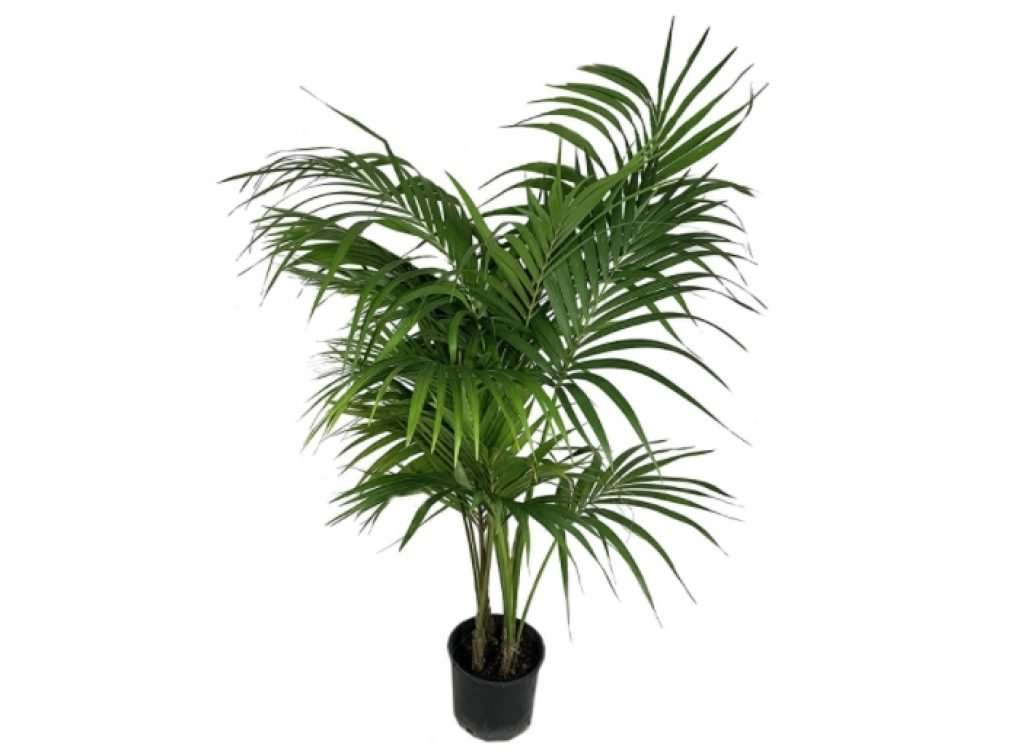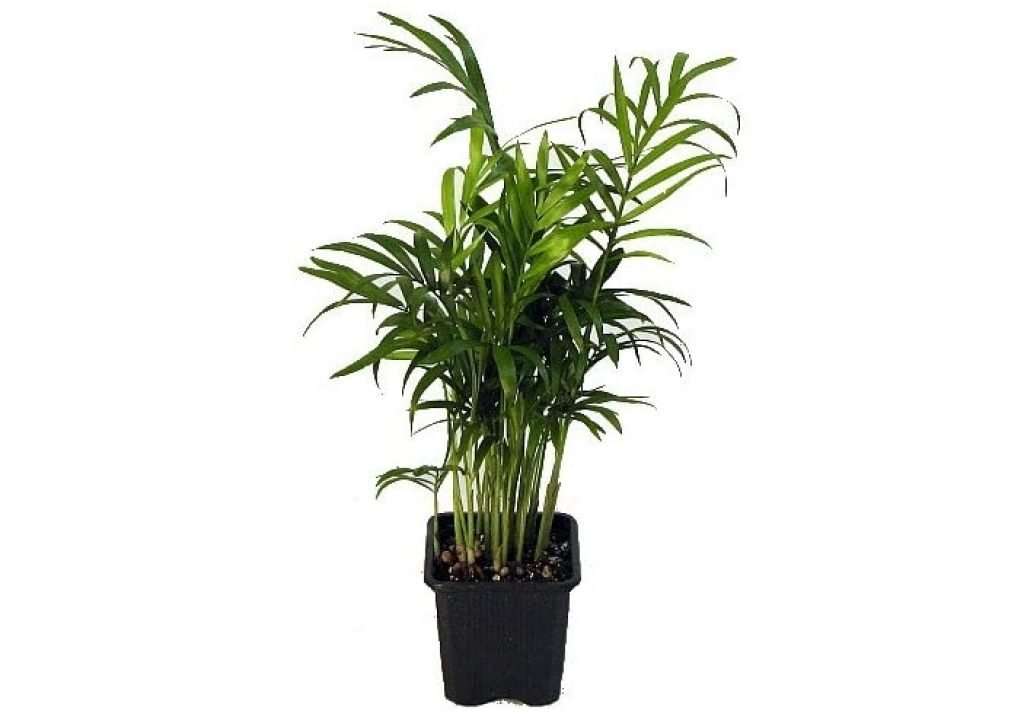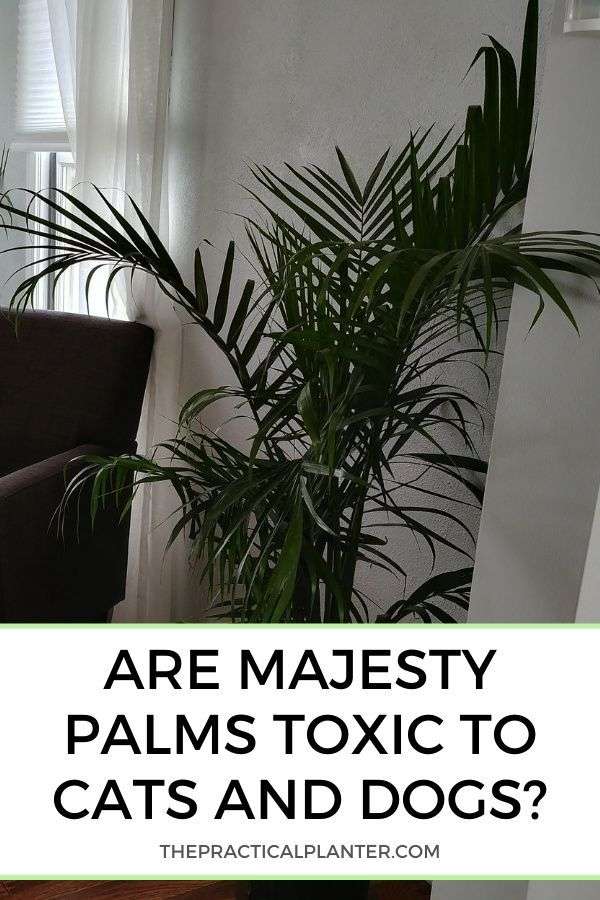Cat Palm Humidity Needs
Cat palms need at least 55 percent humidity to thrive indoors. You can boost air moisture levels by misting the cat palm leaves, setting the pot on a pebble and water tray, or using a humidifier. A lack of humidity causes brown tips on cat palm leaves.
Here are some cat plant care tips to get the humidity levels right:
MistingFill a spray bottle with filtered water at room temperature. Spray a fine mist every other day around the cat palms bushy foliage.
Pebble trayBoost humidity by putting a layer of decorative pebbles in a shallow tray. Pour water in the tray until its half-way up the pebbles. Place the cat palm pot on the stones, not in the water.
Grow with other plantsPlace other houseplants near your cat palm to increase indoor air humidity.
Cat Palms Need Regular Water
Cat Palms require regular watering to keep the soil moist. They really dont like dry soil, so test the first inch of soil in the pot regularly if its dry, the palm needs to be watered.
The soil should be moist, not waterlogged, and the plant must never sit in excess water, so well-draining soil and a pot with drainage holes is essential.
They can be sensitive to chemicals in your water supply, which can cause the leaves to burn. If you live in a hard water area, its a good idea to water your plant with filtered water.
Keeping Cats Away From Your Palm
However, the real question is how can you protect them from curious cats? Cats often mess with any plant in your home: a fern, a cactus, or pretty much anything thats green, popular, easy to grow, and makes you happy.
If youre choosing them as décor pieces around the house, you need to keep these plants in a safe, pet-free zone. Here are a few tips to protect your precious palm:
- Use cayenne pepper or citrus to deter ponytail palm cats by causing an unpleasant aroma
- Add pebbles or stones to the top of your container
- Add pinecones or crumbled aluminum foil
- Buy plants like catnip or lemon balm to attract them
- Lightly spray your cat with water every time it goes near to train it
- Grow your ponytail palm outdoors to avoid the problem entirely
Cats are extremely sensitive to smell, which is a great plus if you want to keep them away from Beaucarnea recurvata. There are many ways to make the plant smell unpleasant for the cat. Sprinkling some cayenne pepper around the leaves is a safe and effective way to keep away cats.
Cats also detest the smell of citrus. If you have any dried orange or lemon peels lying around in the kitchen, simply put some inside the plant pot. While this is a pleasant aroma for you, it can successfully deter cats. Make sure not to use a strong acid, like lemon juice as that may cause damage to the leaves.
Recommended Reading: When A Cat Head Bumps You
Symptoms Of Cardboard Palm Poisoning In Cats
Cardboard palm poisoning is an extremely serious and life-threatening condition for cats. Symptoms usually manifest within the first 24 hours following ingestion. However, if you suspect your cat has ingested the plant, you should not wait for symptoms to appear.
General symptoms include:
Signs of liver damage and/or failure
- Loss of appetite
Pests That Can Affect Cat Palm Growth

Cat palms are prone to spider mites, mealybugs, whitefly, and scale. Get rid of cat palm pests by applying a neem oil solution or wiping the leaves regularly with insecticidal soap. Keeping humidity levels right also helps to prevent some pests.
Its vital to get rid of bugs from cat palms as soon as possible to prevent leaves turning yellow, and eventual plant death.
Related reading: How to get rid of houseplant pests naturally and quickly.
Read Also: What Does It Mean When Your Cat Purrs
Why Is My Cat Palm Dying
The most likely reason for brown tips on cat palm is improper watering. When you overwater Cat Palm with water the root begins to suffer. Other causes are overfertilization, improper lighting, temperature stress, inadequate soil, pests, etc. Improper planting depth can also be a cause for brown tips on the Cat Palm.
How Can You Tell If A Plant Is Poisonous To Cats
If some of the signs like Itchiness, scratching, swelling, red watery eyes, irritation around the mouth, are shown by the cat after eating a plant then that means that the plant is poisonous for the cat. The best way to prevent this is to be aware of the plants poisonous for cats and keep the cats away from them.
Read Also: How To Tell If Your Cat Is Dying
What Other Popular Houseplants Are Toxic To Cats
Dieffenbachia and Philodendrons, together account for over 500 species of plants, several of which have been cultivated as houseplants. Included in these is the ever-popular, Monstera Deliciosa.
;Sadly, they are a danger to humans and pets.;
They produce toxins in their sap, known as calcium oxalates. These in turn form raphides, which are small, spiked structures.
Dumb Cane and Mother-in-Laws Tongue may give clues as to the effects of this substance.;
If taken in by mouth, the substance will cause small abrasions, irritation and subsequent swelling of the tongue and the area around the esophagus. This could lead to difficulty breathing, and possibly respiratory distress.;
Treatment includes washing out the mouth and eating a soothing snack such as ice cream or frozen yogurt to counteract the irritation.;
If the toxins come into direct contact with the skin, they will cause irritation and a burning sensation. Washing or rinsing the area thoroughly will alleviate the symptoms.;
You do not want to get this substance in your eyes!;
Is Areca Palm Safe For Cats Or Toxic
Dypsis or Chrysalidocarpus lutescens commonly known as Areca, golden cane, golden feather, yellow or butterfly palm is another popular garden ornamental plant especially in the tropical and subtropical areas as well as an indoor houseplant in many homes.
Native to the Philippines, South India, and Madagascar, this ornamental plant can grow up to 6-12 meters tall and its base grows several stems.
Is it poisonous to cats? No. It is not poisonous or toxic to cats, dogs, and horses. In fact, it is one of the cat-friendly palms. Do not be worried if you see your feline or canine friend nibbling it if you have it in your garden or as an indoor plant.
However, since plant material is not part of the key component of felines, should they consume excessive amounts, something that rarely happens as it can cause stomach upsets, diarrhea, and vomiting.
Don’t Miss: Is Dried Eucalyptus Safe For Cats
A Thorny Situation Means Trouble
Perhaps the most dangerous aspect of the Madagascar palm is its large, sharp, tri-tipped spines that are around 2 1/2 inches in size, according to the University of Oklahoma Department of Microbiology & Plant Biology. If this plant is placed in the path of your feline friend, it could become seriously injured if it brushes past or runs into the plant’s spine-covered trunk. Any scratches or punctures can quickly become infected if not treated by a veterinarian, warns the Catster website. More serious injuries can affect the cat’s eyes, nose or mouth if it tries to chew on the plant.
Ri Food Swap At Craftland On Sunday
RI Food SwapCraftlandSunday, September 29th 2-4pmWatch this video of a food swap in Portland, OR.Check out the food bank wish list.Have you ever been to a food swap? You can learn more about them and how to create one in your neighborhood at foodswapnetwork.com.Thanks so much for reading this blog entry! I hope it was helpful. Wanna keep nerding out about creative green living? Let’s stay connected: Newsletter // // // // // Bloglovin’ // Consider supporting this blog by shopping via . Thanks.nonstick pots and pans coated in Teflon can be dangerousperfluorinated PFCs have been found in nearly all Americansthe chemical coated cookwareyou need to reach some pretty high temperatures for the chemicals to become airborneraw vegans I know several ways to clean food stuck to pans
| Image via Serious Eats |
Would you rather not sautee your organic kale over toxic chemicals? Does the information about Teflon freak you out? What kind of cookware do you like? Thanks so much for reading this blog entry! I hope it was helpful. Wanna keep nerding out about creative green living? Let’s stay connected: Newsletter // // // // // Bloglovin’ // Consider supporting this blog by shopping via . Thanks.
Read Also: How To Collect A Urine Sample From A Cat
Danger Zone: Plants Toxic To Dogs And Cats
You might be surprised to learn that common plants such as Aloe Vera, Azalea/Rhododendron, Babys Breath, Begonia, Chrysanthemum/Daisy, English Ivy, Lily of the Valley, and Tulips are toxic to dogs and cats. Furthermore, Lilies are toxic to cats . The ASPCA provides a list of the 17 most common household plants that are toxic to pets and UC Davis School of Veterinary Medicine provides a list of plants most responsible for their vet visits.
;Clockwise From Left: Lily of the Valley, Chrysanthemum/Daisy, Tulips, and English Ivy.
What to do if your pet eats a toxic plant;If you suspect your pet has ingested something poisonous, contact your veterinarian or the Animal Poison Control Center 24-hour hotline at 426-4435.
House Plants Safe For Cats And Dogs

by The Organic Goat Lady | Gardening, Healthy Living |
Are you looking for house plants safe for cats and dogs? All of these house plants are non toxic plants for cats and dogs! Yes, you can have beautiful plants in your home without having to worry about your pets!
This site contains affiliate links. If you make a purchase using one of these links, I may earn a commission. Please for more information about cookies collected and our privacy policy.
Recommended Reading: What To Know Before Getting A Cat
Recovery Of Sago Palm Poisoning In Cats
Sago Palm poisoning typically has a grim outcome, and even with aggressive treatment leaves a survival rate of only about 50 percent. The sooner you get your cat veterinary care the better its chances of recovery.;
If treatment is successful, regular follow-up care may be required to keep an eye on liver health. Your cat may need to be put on a special diet, and you will need to watch for further signs of liver damage and neurological issues. If the cat has already digested toxic Sago palm plant materials and treatment is unlikely to be successful, efforts may be made to keep the cat comfortable until its death, or humane euthanization may be recommended.;
Be sure to remove Sago Palm plants in your home and in your yard to prevent your cat from a recurrence and to keep other pets from accidental poisoning.
*Wag! may collect a share of sales or other compensation from the links on this page. Items are sold by the retailer, not Wag!.
Sago Palm Poisoning Average Cost
From 488 quotes ranging from $200 – $3,000
Average Cost
Watch Out For Pests And Diseases
Cat Palms care is pretty simple, but you still have to be alert for pests like ants,;mealy bugs, scale, and spider mites.
Its best to act immediately as soon as you notice an infestation. Remember to check under the leaves, as some pests like to hide there.
If you detect an infestation, the best thing to do is use an all-purpose plant-insect repellent that you can purchase from your local garden center.
This will appear as a lesion that is reddish to brown in color and measures 1/8 to 1/4 inches in length. It can be treated with a fungicide from your local garden center.
Don’t Miss: Can You Become Allergic To Cats
Diseases Affecting Cat Palm Growth
Leaf spot is a common fungal disease that affects cat palms. Most diseases affecting cat palms are due to their roots sitting in soggy soil. The constant dampness causes fungal infections to thrive and that affects your cat palms growth. Fungal root diseases can eventually kill cat palms.
Avoid water splashing on foliage and only water when the soil partly dries to prevent root rot. If you notice spots on leaves, or the stems are yellowing and seem weak, repot the dying cat palm in fresh, sterile soil to help revive it.
What Does A Sago Palm Look Like
sago palmlook likepalmpalmSago palmssago palmCataractarum Palm, Cat Palm
Recommended Reading: Why Do Cats Lick Each Other
Why Are The Tips Of My Cat Palm Leaves Turning Brown
If the cat palms leaf tips are turning brown, its usually a sign of too much fertilizer. Flush the soil to remove the mineral buildup and dont feed the plant for a few months.
If the whole cat palm leaves are turning brown, you are probably over-watering the plant. Trim off brown leaves and let the soil to partially dry between watering to prevent palm leaves turning brown.
Find out other amazing indoor palm plants and how to grow them.
Related articles:
How To Keep Your Cat Palm Away From Your Dogs And Cats
While keeping your houseplants from dogs and cats is never easy as they always end up where you least expect them to be, we have a few tips and tricks you can use that will make your life easier.
Here are some of the things you can do to keep your cat palm away from your dogs and cats.
Recommended Reading: Is Christmas Tree Water Bad For Cats
Is Parlor Palm Toxic To Cats Or Safe
Scientifically known as Chamaedorea elegans, the parlor or Neanthe Bella palm is one of the most popular and commonly sold houseplants worldwide. It is also a common ornamental landscaping plant.
Chamaedorea elegans is native to Southern Mexico and it grows into a small tree and can be described as a woody,;rhizomatous;shrub-like plant with numerous densely arranged reed-like or bamboo, slender stems, it is found in tropical areas, growing to 23;m, notes Wikipedia.
Its odorous flowers are often yellow, light yellow or orange-red and on a few occasions, you may notice pea-sized berries after flowering has occurred.
Is it safe for cats? Yes. The;parlor palm is safe for cats. i.e., it not poisonous to cats, dogs or horses.
What Palms Are Toxic To Cats And Dogs

While most palms that you can grow at home are non-toxic to cats and dogs, there is one palm that you should avoid at all costs as its highly toxic.
Sago palm is a popular houseplant that is highly toxic to cats, dogs, and humans alike when ingested, with its seeds being the most dangerous part.
Even though it contains the word palm in it, the sago palm plant is actually not a true palm. In reality, this plant belongs to the Cycas genus, and while this genus is not related to palms in any way, a sago palm looks awfully similar to a palm.
The effects of cycasin found in a sago palm are way more severe than the effects of calcium oxalate found in most popular houseplants, as it can easily cause kidney failure in dogs and cats, even in small doses.
As a result, we highly recommend against having a sago palm plant in your house if you have pets, as the damage that it may cause to your pets may be irreversible.
You May Like: What Are Some Unique Cat Names
Recovery Of Cardboard Palm Poisoning In Cats
Recovery and prognosis may vary depending on how quickly the poisoning was diagnosed and treated. You should ensure your cat has a warm place to recover on the return home, and always follow your vet’s instructions regarding post-treatment care and dietary changes.
If your cat ingested the cardboard palm during its outdoor activity, you may want to limit your cat’s outdoor access to prevent future poisoning. If you bought or grew the cardboard palm as a house or garden plant, remove it immediately. Before making any plant purchases, you should always research whether the plant you hope to purchase is toxic to cats.
Your vet will usually schedule a follow-up appointment within ten days of treatment. During the appointment, your vet will take blood tests to monitor healing and to ensure no additional organ damage has occurred.
*Wag! may collect a share of sales or other compensation from the links on this page. Items are sold by the retailer, not Wag!.
Cardboard Palm Poisoning Average Cost
From 438 quotes ranging from $500 – $4,000
Average Cost